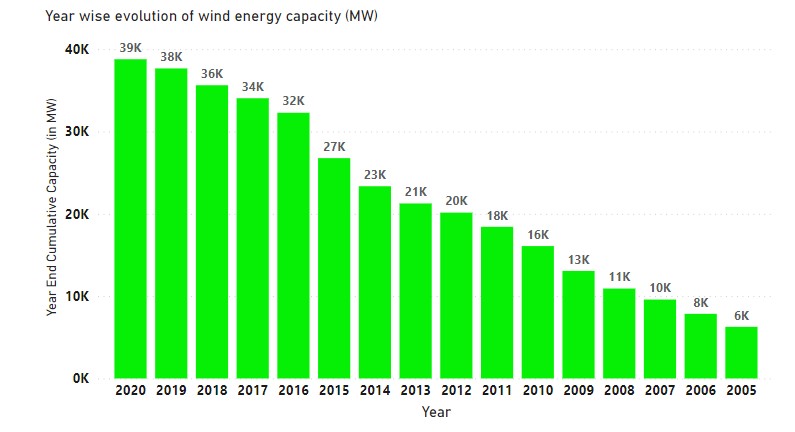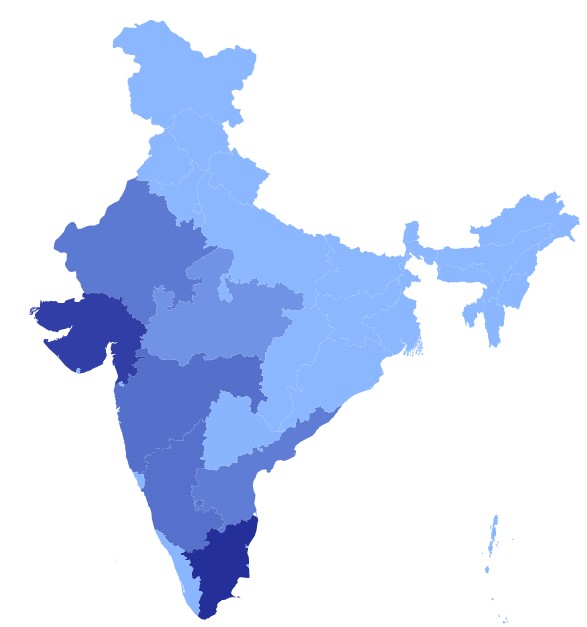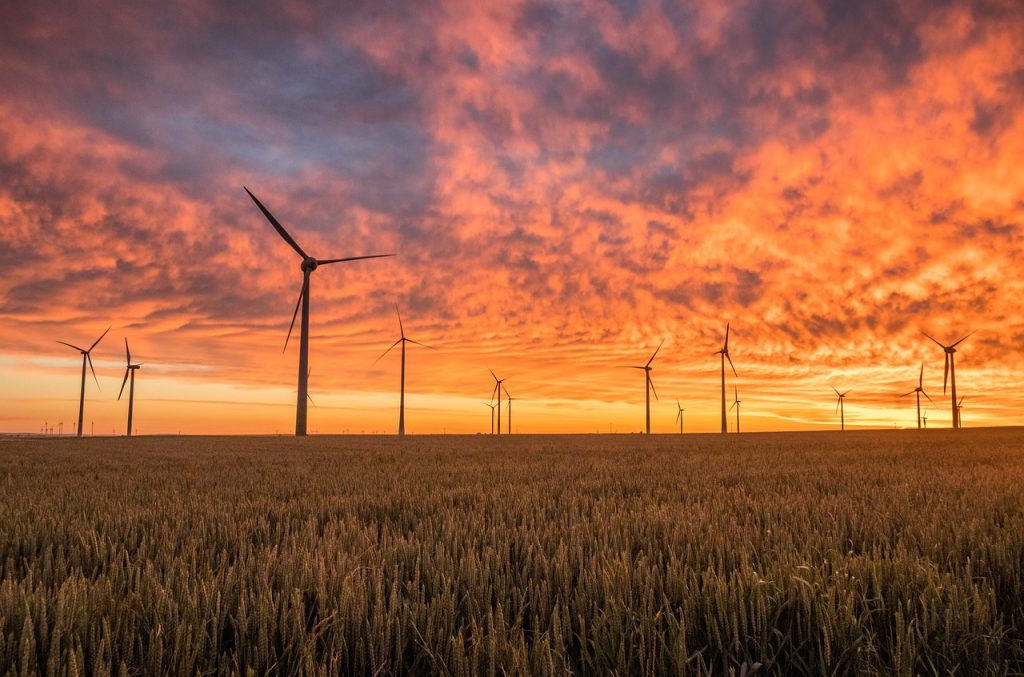The world has seen tremendous improvement, especially over the last 10 years in the field of renewable energy. It can be installed capacity, technology development, cost reduction, and, most importantly, acceptance among governments and common people around the globe. The same expression can be used for India as well. India has seen a significant amount of rising in renewable energy capacity. Solar energy is the front runner for India followed by wind energy, hydro energy, and bioenergy. So how does wind energy have developed over the years for India?
Wind energy for India so far
The evolution of wind power capacity in India can be seen in the graph below.

The growth of wind power in the last 15 – 20 years has been a steady increase, unlike Solar energy capacity which saw a significant jump in the last 5 years. Several factors such as wind energy potential, technology development, and many more can contribute to this modest growth in wind energy.
An assessment done by the National Institute of Wind Energy found seven states with the most potential for wind energy. The southern and western regions of India contribute majorly to this progress. Whereas eastern and northeastern regions of India have zero contribution.

The majority of Indian wind power projects are onshore to date. However, significant efforts are being made in developing offshore projects given the fact that India has a 7500 Km long coastline. Almost 70 GW of wind energy potential is available for India along with the coast of Gujrat and Tamil Nadu.
Developing a wind power plant is a complex and costly process that includes many challenges such as siting, height, terrain, environmental factors, metrological factors, convenience for the people, and many more, making the development tougher and more time-consuming. Despite the fact, the World, as well as India, seems to pace up rapidly toward developing wind power plants.

